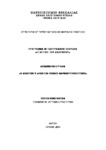| dc.contributor.advisor | Δήμας, Κωνσταντίνος | el |
| dc.creator | Τσόγκα, Κωνσταντίνα | el |
| dc.date.accessioned | 2016-07-06T10:57:53Z | |
| dc.date.available | 2016-07-06T10:57:53Z | |
| dc.date.issued | 2014 | |
| dc.identifier.other | 12771 | |
| dc.identifier.uri | http://hdl.handle.net/11615/43139 | |
| dc.identifier.uri | http://dx.doi.org/10.26253/heal.uth.4112 | |
| dc.language.iso | el | en |
| dc.rights | Attribution-NonCommercial-NoDerivatives 4.0 International | en |
| dc.rights.uri | http://creativecommons.org/licenses/by-nc-nd/4.0/ | en |
| dc.subject.other | ΑΝΑΣΤΟΛΕΙΣ mTOR | el |
| dc.subject.other | ΡΑΠΑΜΥΚΙΝΗ | el |
| dc.subject.other | ΙΑΤΡΙΚΗ ΓΕΝΕΤΙΚΗ | el |
| dc.title | Οι αναστολείς mTOR σαν πιθανοί φαρμακευτικοί στόχοι | el |
| dc.type | masterThesis | en |
| heal.recordProvider | Πανεπιστήμιο Θεσσαλίας - Βιβλιοθήκη και Κέντρο Πληροφόρησης | el |
| heal.academicPublisher | Πανεπιστήμιο Θεσσαλίας. Σχολή Επιστημών Υγείας. Τμήμα Ιατρικής. | el |
| heal.academicPublisherID | uth | en |
| heal.fullTextAvailability | true | en |
| dc.rights.accessRights | free | en |



